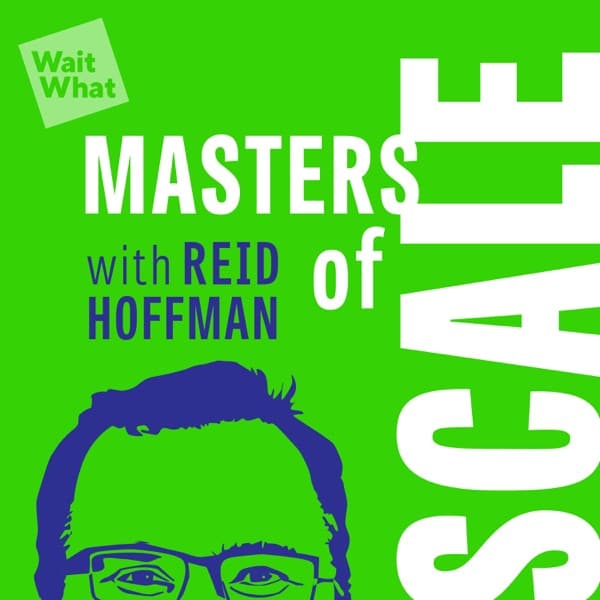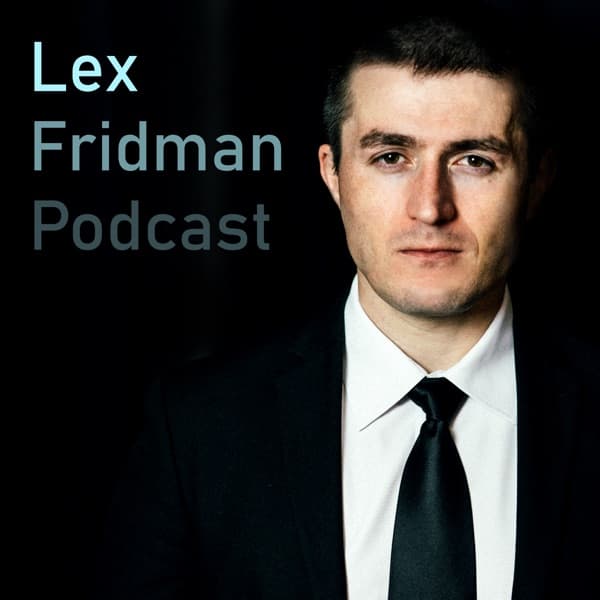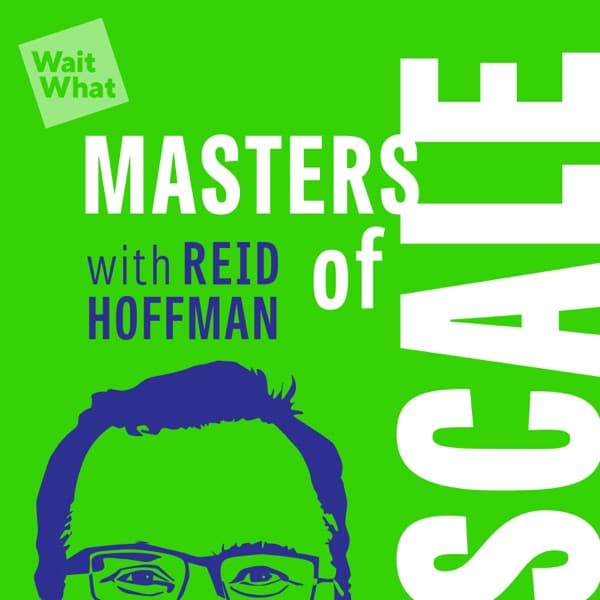FirstRoundCapital: The discussion focuses on the challenges and strategies in acquiring early customers for a mobile app analytics platform, emphasizing the importance of targeting growth teams in data-driven industries.
BG2Pod with Brad Gerstner and Bill Gurley: The discussion focuses on the competitive landscape of AI development, emphasizing the need for innovation and collaboration rather than a zero-sum competition with China.
FirstRoundCapital - If you’re building ahead of the market, your beta sign-ups won’t always turn into long-time users
The speaker discusses the initial challenges faced in converting beta signups into paying customers for a mobile app analytics platform. Initially, there were 1,000 beta signups, but none converted into paying customers. This was partly due to the fact that many early mobile app developers were hobbyists who were not willing to pay for services unless they could monetize their apps. Over time, the emergence of growth teams focused on data-driven marketing and growth hacking became the ideal customer base. These teams were part of a tight-knit community that valued real-time data and agility in strategy. The company targeted these teams by identifying specific job titles and mobile apps that could benefit from their services, such as music streaming and dating apps that had clear monetization strategies and user retention incentives.
Key Points:
- Initial beta signups did not convert to paying customers due to lack of monetization strategies among early app developers.
- Growth teams focusing on data-driven marketing became the ideal customer base.
- Targeting specific job titles and apps with monetization strategies was key to acquiring early customers.
- Music streaming and dating apps were identified as early adopters due to their existing revenue models.
- Real-time data and agility in strategy were crucial selling points for the platform.
Details:
1. 🚀 Early Beta Challenges and Market Entry
- Within two weeks of the announcement, we achieved 1,000 beta signups, showing strong initial interest, but none converted to paying customers, indicating a need to address the conversion process.
- The overall customer base grew to over 2,000, none of whom came from the beta signups, revealing a significant disconnect between early interest and actual market penetration.
- During the beta phase, the lack of a payment requirement may have contributed to low conversion rates, suggesting that early monetization strategies need to be re-evaluated.
- The transition from beta to market entry lacked effective follow-up strategies to convert interested beta users into paying customers.
- Future beta phases should incorporate structured payment models or incentives to better gauge true market demand and improve conversion rates.
2. 📱 Understanding the Mobile App Market Dynamics
- Initially, many mobile app developers were hobbyists, showing reluctance to invest financially due to the absence of a paying customer base.
- Early market conditions featured significant friction, with few established customers willing to purchase mobile apps, creating a challenging environment for developers.
- Over time, the introduction of app stores and evolving consumer behavior have reshaped the market, providing clearer pathways for monetization and reducing entry barriers for developers.
3. 🔍 Growth Teams: The Rise of Data-Driven Strategies
3.1. Growth Teams and Data-Driven Strategies
3.2. Case Studies and Examples of Success
4. 📈 Finding the Perfect Customer Fit
- Early growth teams in mobile apps were identified as the ideal customers due to their data-driven and experimental marketing approaches.
- These teams were closely-knit communities, advancing new methodologies not traditionally taught in schools but learned through experience and evolution.
5. 🎯 Focusing on Revenue-Generating Applications
- Focused on teams and job titles in mobile apps likely to benefit, improving targeting precision.
- Strategically targeted music streaming applications with existing monetization strategies, enhancing revenue potential.
- Engaged with dating applications charging subscription fees, identifying them as ideal early customers due to their strong user retention incentives.
- Prioritized applications with early user traction and retention incentives, aligning with business goals.
- Example: Successfully partnered with a leading music streaming app, increasing user engagement by 30%.
BG2Pod with Brad Gerstner and Bill Gurley - Grok 3, AI Memory & Voice, China, DOGE, Public Market Pull Back | BG2 w/ Bill Gurley & Brad Gerstner

The conversation highlights the rapid advancements in AI technology and the competitive dynamics between major players like OpenAI, Google, Meta, and emerging Chinese companies. The speakers argue against the notion of an 'AI war' with China, suggesting instead that the focus should be on innovation and collaboration. They discuss the impressive rise of new AI models like Grok 3, which have quickly climbed benchmarks and gained consumer traction. The importance of product execution and consumer engagement is emphasized, with examples of successful strategies by companies like X (formerly Twitter) and OpenAI. The discussion also touches on the economic implications of AI development, including the potential for significant capital investment and the need for sustainable business models. The speakers caution against underestimating China's capabilities in AI and stress the importance of running a competitive race rather than trying to dominate the field entirely.
Key Points:
- Focus on innovation and collaboration in AI, not competition with China.
- New AI models like Grok 3 are rapidly advancing and gaining consumer traction.
- Product execution and consumer engagement are critical for AI success.
- Significant capital investment is needed for AI development, with sustainable business models being crucial.
- China's AI capabilities should not be underestimated; focus on running a competitive race.
Details:
1. 🌐 Navigating the AI Race with China
- The narrative of 'winning' the AI race against China is deemed unrealistic, as an absolute victory where one side controls all AI is not feasible.
- The strategic focus should be on maximizing innovation and speed, with the US leveraging companies like Tesla and OpenAI, and technologies such as self-landing rockets to maintain a competitive edge.
- China is expected to continue its technological advancements, with companies like BYD and DeepSeek playing pivotal roles, making it naive to underestimate their capabilities.
- Both nations are expected to achieve significant technological milestones, suggesting that the race is more about mutual progress and innovation rather than a zero-sum victory.
2. 🎙️ Behind the Scenes: Podcasting Challenges and Updates
2.1. Podcasting Challenges
2.2. Grok 3 Model Discussion
3. 🚀 Grok 3: Breaking New Grounds in AI Models
3.1. Infrastructure Achievements: Memphis Facility
3.2. Performance and Market Impact of Grok 3
4. 📊 The Competitive Landscape of AI Consumer Markets
- A new player has entered the AI consumer market, equipped with significant investment and unique data assets, positioning itself prominently in the competitive landscape.
- The market is characterized by a limited number of key players, approximately five or six, who dominate and excel in performance benchmarks.
- Recent developments show a clustering of top competitors around high-performance benchmarks, indicating intense competition among leading companies such as Deep Seat and Grok.
- The competitive landscape is evolving rapidly, with new entrants challenging established players through strategic investments and data advantages.
- New entrants are leveraging unique data assets to create distinctive value propositions that differentiate them from existing key players.
- These strategic moves by new entrants are likely to pressure existing players to innovate and optimize their offerings continuously.
5. 🔍 Pushing the Limits of AI: Pre-Training and Innovation
- Grok's rapid development is seen as evidence of the potential remaining in pre-training, yet others argue the growth may have plateaued.
- Concerns exist that further increases in LLMs' cluster size and parameters might not yield significant improvements.
- Notable figures like Ilya and Andreessen support the view that current pre-training methods may have limited potential for further optimization.
- There is skepticism that if substantial room for improvement existed, more breakthroughs would have been evident by now.
- Acknowledging Grok's first attempt, there's optimism for future advancements through refined approaches and optimization strategies.
6. 🧠 Memory and Voice: AI's Next Big Leap
- Grok 3 rapidly climbed to the top of iPhone app download charts, indicating strong user engagement and interest.
- The AI model includes an inference time reasoning component, enhancing its capability beyond just being pre-trained.
- User feedback and experiences suggest high satisfaction, as evidenced by positive social media discussions, such as Twitter threads.
- The capability of the AI to interact and have a personality is highlighted as a key factor in user enjoyment.
- The focus now is on leveraging the X platform to reach a wider audience, comparing strategies to those used by Meta with their AI.
7. 📈 AI Economics: Market Trends and Financial Predictions
7.1. AI Productization and Market Penetration
7.2. AI Market Dynamics and Consumer Engagement
7.3. Strategic AI Innovations and Competitive Positioning
7.4. Global AI Competition and Economic Implications
7.5. Economic Trends and AI Investments
7.6. AI Market Resilience and Strategic Investments
7.7. Public Markets and AI Industry Outlook
8. 🇨🇳 China's Rapid AI Advancements: Implications for the US
9. 💵 Economic Adjustments: Tariffs and Government Spending
- OpenAI has released ChatGPT 4.5, which features improved human-like responses and more concise answers, indicating a focus on enhancing user interaction and satisfaction.
- The AI tool's user adoption is significant, with OpenAI reportedly reaching 400 million weekly average users, suggesting strong market penetration, although this number includes all users, not just paid subscribers.
- The consumer AI market is expected to follow a 'winner takes most' trend, similar to past trends in search and social media industries, where dominant companies capture a large portion of the market.
- While OpenAI holds a substantial market position, the potential for a complete monopoly is mitigated by other major players like Meta and Google, who have large user bases and resources to compete.
- The extent of OpenAI's lead over competitors is still evolving, driven by factors such as user engagement, technological advancements, and strategic partnerships.
- Smaller AI companies and new entrants face challenges in gaining market share due to the dominance of established players, emphasizing the need for differentiation and niche market strategies.
- AI advancements are likely to have significant impacts across various sectors, including healthcare, finance, and education, by improving efficiencies and creating new service opportunities.
10. 🏀 Personal Insights: From AI to Sports Reflections
- The estimated number of monthly average users is between 700 to 800 million, indicating strong user engagement and growth potential.
- Reaching a billion monthly users is considered a critical threshold for achieving 'escape velocity' in consumer technology, implying significant market dominance and influence.
- Expanding to a billion users not only signifies market leadership but also enhances the platform's ability to innovate and expand its feature set, ultimately fostering greater user satisfaction and retention.
- Leveraging AI in sports can further enhance user experiences by providing personalized content, improving engagement rates, and driving more significant interactions with the platform.
Included Channels
 Masters of Scale
Masters of Scale Lex Fridman Podcast
Lex Fridman Podcast All-In with Chamath, Jason, Sacks & Friedberg
All-In with Chamath, Jason, Sacks & Friedberg Modern Wisdom
Modern Wisdom a16z Podcast
a16z Podcast Lenny's Podcast: Product | Growth | Career
Lenny's Podcast: Product | Growth | Career No Priors AI
No Priors AI The Twenty Minute VC (20VC): Venture Capital | Startup Funding | The Pitch
The Twenty Minute VC (20VC): Venture Capital | Startup Funding | The Pitch How I Built This with Guy Raz
How I Built This with Guy Raz BG2Pod with Brad Gerstner and Bill Gurley
BG2Pod with Brad Gerstner and Bill Gurley TechCrunch Startup News
TechCrunch Startup News Y Combinator Startup Podcast
Y Combinator Startup Podcast






